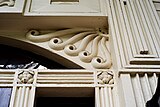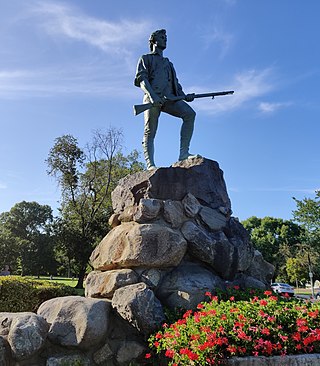
Lexington is a suburban town in Middlesex County, Massachusetts, United States, located 10 miles (16 km) from Downtown Boston. The population was 34,454 as of the 2020 census. The area was originally inhabited by Native Americans, and was first settled by Europeans in 1641 as a farming community. Lexington is well known as the site of the first shots of the American Revolutionary War, in the Battle of Lexington on April 19, 1775, where the "Shot heard 'round the world" took place. It is home to Minute Man National Historical Park.

The Jefferson Market Branch of the New York Public Library, once known as the Jefferson Market Courthouse, is a National Historic Landmark located at 425 Avenue of the Americas, on the southwest corner of West 10th Street, in Greenwich Village, Manhattan, New York City, on a triangular plot formed by Greenwich Avenue and West 10th Street. It was originally built as the Third Judicial District Courthouse from 1874 to 1877, and was designed by architect Frederick Clarke Withers of the firm of Vaux and Withers.

The Thomas Crane Public Library (TCPL) is a city library in Quincy, Massachusetts. It is noted for its architecture. It was funded by the Crane family as a memorial to Thomas Crane, a wealthy stone contractor who got his start in the Quincy quarries. The Thomas Crane Library has the second largest municipal collection in Massachusetts after the Boston Public Library.
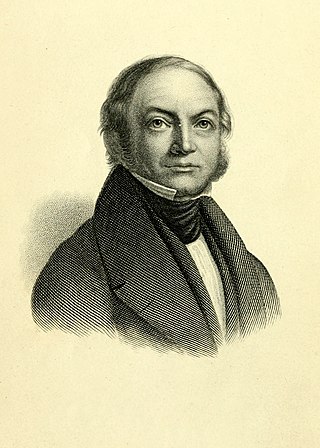
Charles (Karl) Theodor Christian Friedrich Follen was a German poet and patriot, who later moved to the United States and became the first professor of German at Harvard University, a Unitarian minister, and a radical abolitionist. He was fired by Harvard for his abolitionist statements.

Follen Church is a historic Unitarian Universalist congregation located at 755 Massachusetts Avenue in Lexington, Massachusetts, United States.

Rhodes Memorial Hall, commonly known as Rhodes Hall, is a historic house located in Atlanta, Georgia, United States. It was built as the home of furniture magnate Amos Giles Rhodes, proprietor of Atlanta-based Rhodes Furniture. The Romanesque Revival house occupies a prominent location on Peachtree Street, the main street of Atlanta, and is listed in the National Register of Historic Places. It is open to the public and has been the home of The Georgia Trust for Historic Preservation since 1983.
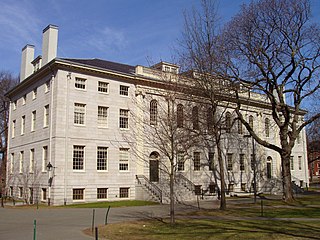
University Hall is a white granite building designed by the great early American architect Charles Bulfinch and built by the noted early engineer Loammi Baldwin, Jr. It is located in Harvard Yard on the campus of Harvard University in Cambridge, Massachusetts. It was designated a National Historic Landmark in 1970 for its architectural significance.
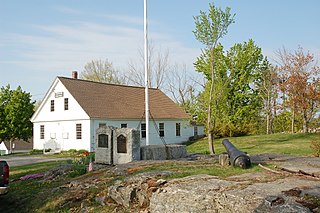
The Lyndeborough Center Historic District, located in the town of Lyndeborough, New Hampshire, United States, consists of three structures: the Town Pound, Town Hall, and Congregational Church. The district was placed on the National Register of Historic Places in 1984. In 2010, by town meeting vote, this district became part of a larger, officially zoned local historic district.
This is an incomplete list of historic properties and districts at United States colleges and universities that are listed on the National Register of Historic Places (NRHP). This includes National Historic Landmarks (NHLs) and other National Register of Historic Places listings. It includes listings at current and former educational institutions.
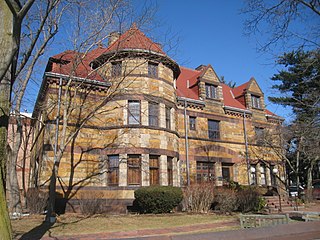
The Edwin Abbot House, also known as the Zabriskie House, is an historic house at 27 Garden Street in Cambridge, Massachusetts. Built in 1889 to a design by Longfellow, Alden & Harlow, it is a prominent local example of residential Richardsonian Romanesque architecture. It has served as the principal building of the Longy School since 1937. It was listed on the National Register of Historic Places in 1979, and included in the Follen Street Historic District in 1986.

Wright Memorial Library, more commonly known as the "Wright Building," is a historic library at 147 St. George Street in Duxbury, Massachusetts.

The Frederic C. Adams Public Library is a historic library building at 33 Summer Street in Kingston, Massachusetts. Designed by Joseph Everett Chandler (1864–1945), a major proponent of the Colonial Revival style, the library was built in 1898 and added to the National Register of Historic Places in 2001. The building ceased operation as a public library in December 1994, when the town opened the new Kingston Public Library at 6 Green Street.

War Memorial Plaza is a public square, small park and space in Downtown Baltimore between City Hall and the War Memorial Building, between Holliday Street on the west, East Fayette Street on the south, North Gay Street on the east, and East Lexington Street on the north.
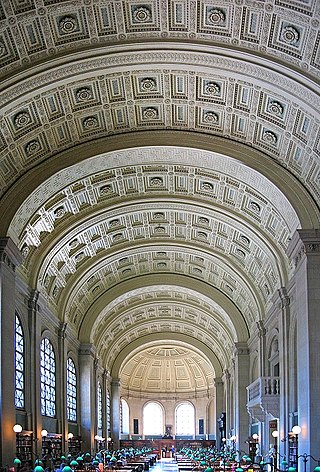
The McKim Building is the main branch of the Boston Public Library at Copley Square in Boston, Massachusetts. The building, described upon its 1895 opening as a "palace for the people", contains the library's research collection, exhibition rooms, and administrative offices. The building includes lavish decorations, a children's room, and a central courtyard surrounded by an arcaded gallery in the manner of a Renaissance cloister. The library regularly displays its rare works, often in exhibits that will combine works on paper, rare books, and works of art. Several galleries in the third floor of the McKim building are maintained for exhibits.
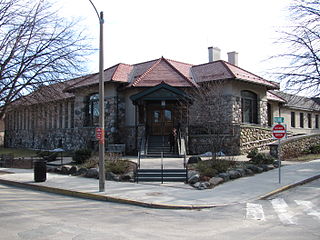
The Cary Memorial Library (est.1869) is the main branch of the public library in Lexington, Massachusetts. It is located at 1874 Massachusetts Avenue in the town center.
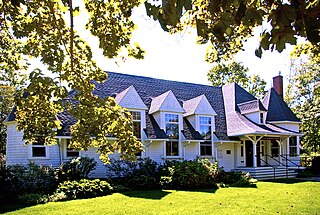
The Jacob Sears Library is one of the five public libraries of Dennis, Massachusetts. It is located at 23 Center Street in East Dennis, in a building funded by a bequest from Jacob Sears, a longtime East Dennis resident. The Shingle style structure was built in 1895 to a design by the Boston firm of Rand & Taylor. The library building was listed on the National Register of Historic Places in 2009.

The Gloucester Lyceum (1830-1872) of Gloucester, Massachusetts, was an association for "the improvement of its members in useful knowledge, and the advancement of popular education." It incorporated in 1831.

Kilham & Hopkins was an architectural firm in Boston, Massachusetts formed in 1899 or 1900 by its founding members, Walter Harrington Kilham and James Cleveland Hopkins. The firm later became Kilham, Hopkins & Greeley after William Roger Greeley joined the firm in 1916, and Kilham Hopkins Greeley and Brodie after Walter S. (Steve) Brodie joined the firm in 1945.
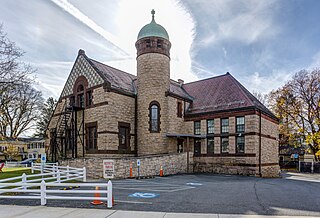
The Dedham Public Library is a public library system in Massachusetts established in 1872. It is part of the Minuteman Library Network.





















